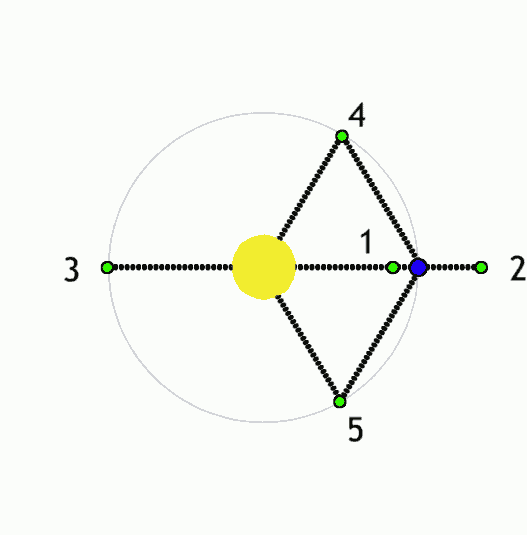adss
Lagrange Points The Beauty Of Space
Lagrange Points
A Lagrangian point is a point between two large bodies where if you place a small body with negligible influence on the two larger bodies (such as, say, a satellite between the Sun and the Earth), the gravitational force exerted by the two large bodies is equal in magnitude and opposite in direction such that they cancel each other out, thus enabling the small object to stay in equilibrium in that position in space relative to the bigger object.
Typically, a spacecraft sent from the Earth into the vacuum of space will continue moving in the direction we send it, unless it's affected by the gravity of a celestial object, like a star or a planet. Even if we stopped a spacecraft in the middle of space, the gravity of objects around it would eventually pull it in some direction.
Enter Joseph-Louis Lagrange. He theorized that at certain points the gravity of two bodies, combined with the third body's centripetal force, would keep the third body in a constant location relative to the other bodies.
There are five Lagrange points located at sun earth system.

L1
Kepler’s laws require that the closer a planet is to the Sun, the faster it will move. Any spacecraft going around the Sun in an orbit smaller than Earth's will also soon overtake and move away, and will not keep a fixed station relative to Earth.
However, there is a loophole. If the spacecraft is placed between Sun and Earth, Earth's gravity pulls it in the opposite direction and cancels some of the pull of the Sun. With a weaker pull towards the Sun, the spacecraft then needs less speed to maintain its orbit.
If the distance is just right - about a hundredth of the distance to the Sun - the spacecraft, too, will keep its position between the Sun and the Earth and will need just one year to go around the Sun. This is L1.
L2
An effect similar to that which causes the L1 point occurs on the ‘night’ side of Earth (further away from the Sun but about the same distance from Earth).
A spacecraft placed there is more distant from the Sun and therefore should orbit it more slowly than the Earth; but the extra pull of the Earth adds up to the Sun's pull, and this allows the spacecraft to move faster and keep up with Earth.
At a certain point, the spacecraft’s orbital period equals that of Earth’s. This is L2. It is located 1.5 million kilometres directly 'behind' the Earth as viewed from the Sun. It is about four times further away from the Earth than the Moon.
L2 is a great place from which to observe the larger Universe. A spacecraft would not have to make constant orbits of Earth, which result in it passing in and out of Earth's shadow and causing it to heat up and cool down, distorting its view. Free from this restriction and far away from the heat radiated by Earth, L2 provides a much more stable viewpoint.
L3
L3 lies on a line defined by the Sun and Earth, but beyond the position of the Sun.
On the opposite side of the Sun, just outside the orbit of Earth, the combination of the Sun’s and Earth’s gravity would cause a spaceraft’s orbital period to equal that of Earth.
Since the position of this Lagrange point lies behind the Sun, any objects which may be orbiting there cannot be seen from Earth.
L4 and L5
A spacecraft at L1, L2, or L3 is ‘meta-stable’, like a ball sitting on top of a hill. A little push or bump and it starts moving away. A spacecraft at one of these points has to use frequent rocket firings or other means to remain in the same place. Orbits around these points are called 'halo orbits'.
But at L4 or L5, a spacecraft is truly stable, like a ball in a bowl: when gently pushed away, it orbits the Lagrange point without drifting farther and farther, and without the need of frequent rocket firings. The Sun's pull causes any object in the L4 and L5 locations to ‘orbit’ the Lagrange point in an 89-day cycle. These positions have been studied as possible sites for artificial space stations in the distant future.
 |
| Group of asteroids orbiting at L4 & L5 |
Subscribe to:
Posts (Atom)






























